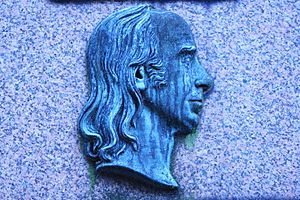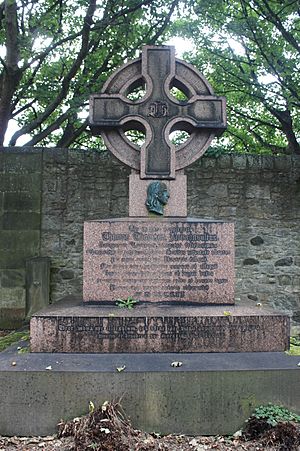Thomas Thomson (advocate) facts for kids
Thomas Thomson (born November 10, 1768 – died October 2, 1852) was an important Scottish lawyer, historian, and record keeper. He worked as a top clerk in a court called the Principal Clerk of Session and was also a secretary for a science and literature group, the Royal Society of Edinburgh. He spent his life making old Scottish records and laws easier for everyone to find and understand.
About Thomas Thomson's Life
Thomas Thomson was born in a small town called Dailly in Scotland on November 10, 1768. He was the oldest son of Reverend Thomas Thomson. When he was 13, he started studying at the University of Glasgow. He earned his master's degree in 1789. After that, he studied law at the University of Edinburgh and became a lawyer in 1793.
Early in his career, Thomas Thomson lived in Edinburgh. He was good friends with the famous writer Walter Scott, who was also a lawyer at the time.
Thomas Thomson became known for his legal skills, especially in cases that needed a lot of historical and legal knowledge. His most important job started in 1806 when he became the deputy clerk-register of Scotland. In this role, he worked to improve how public records were kept. He made sure old documents were saved, repaired, and easy for people to look at. He also helped publish old laws from the Scottish parliament.
In 1807, he became a member of the Royal Society of Edinburgh, a group for important scientists and thinkers. He served as their secretary from 1812 to 1820.
In 1828, Thomas Thomson became one of the main clerks for the court of session, which is a high court in Scotland. He also helped start the Bannatyne Club in 1823, a group that published old Scottish texts. He became its president after Walter Scott passed away in 1832. In 1839, he left his job as deputy clerk-register.
Thomas Thomson passed away in Edinburgh on October 2, 1852. He is buried in Dean Cemetery.
Thomas Thomson's Family
In 1836, Thomas Thomson married Anne Reed.
Thomas Thomson's Important Works
Thomas Thomson worked hard to make old Scottish records easier to use. He created several guides for researchers at the register office, which is where important public records are kept. These guides helped people find information about land ownership and legal actions.
One of his biggest projects was publishing The Acts of the Parliament of Scotland. This huge collection included laws from 1424 to 1707. He also published many other important historical documents, including:
- Inquisitionum ad Capellam Domini Regis Retornatarum, quæ in Publicis Archivis Scotiæ adhuc servantur, Abbreviatio (1811, 1816) – This was a summary of old records about land and property.
- Registrum Magni Sigilli Regum Scotorum in Archivis Publicis asservatum, mcccvi–mccccxxiv (1814) – This book contained records of the Great Seal of the Kings of Scotland.
- The Acts of the Lords Auditors of Causes and Complaints, mcccclxvi–mccccxciv (1839) – This covered decisions made by a special court.
- The Acts of the Lords of Council in Civil Causes, mcccclxxviii–mccccxcv (1839) – This included decisions from another important court.
He also edited other historical works, such as:
- A Collection of Inventories and other Records of the Royal Wardrobe and Jewel House, and of the Artillery and Munition in some of the Royal Castles, 1488–1606 (1815) – This was a collection of lists of royal belongings.
- Chamberlain Rolls, which were financial records from 1326 to 1459.
For the Bannatyne Club, he edited many historical books, including:
- The History and Life of King James the Sext (1825)
- Memoirs of his own Life by Sir James Melville of Halhill (1827)
- The History of Scotland, by John Lesley, bishop of Ross (1830)
- The Ragman Rolls, 1291–1296 (1834) – These were lists of Scottish nobles who pledged loyalty to the King of England.
Thomas Thomson also wrote articles for the Edinburgh Review, a famous magazine. He helped make sure important historical documents were preserved and available for future generations to study.




